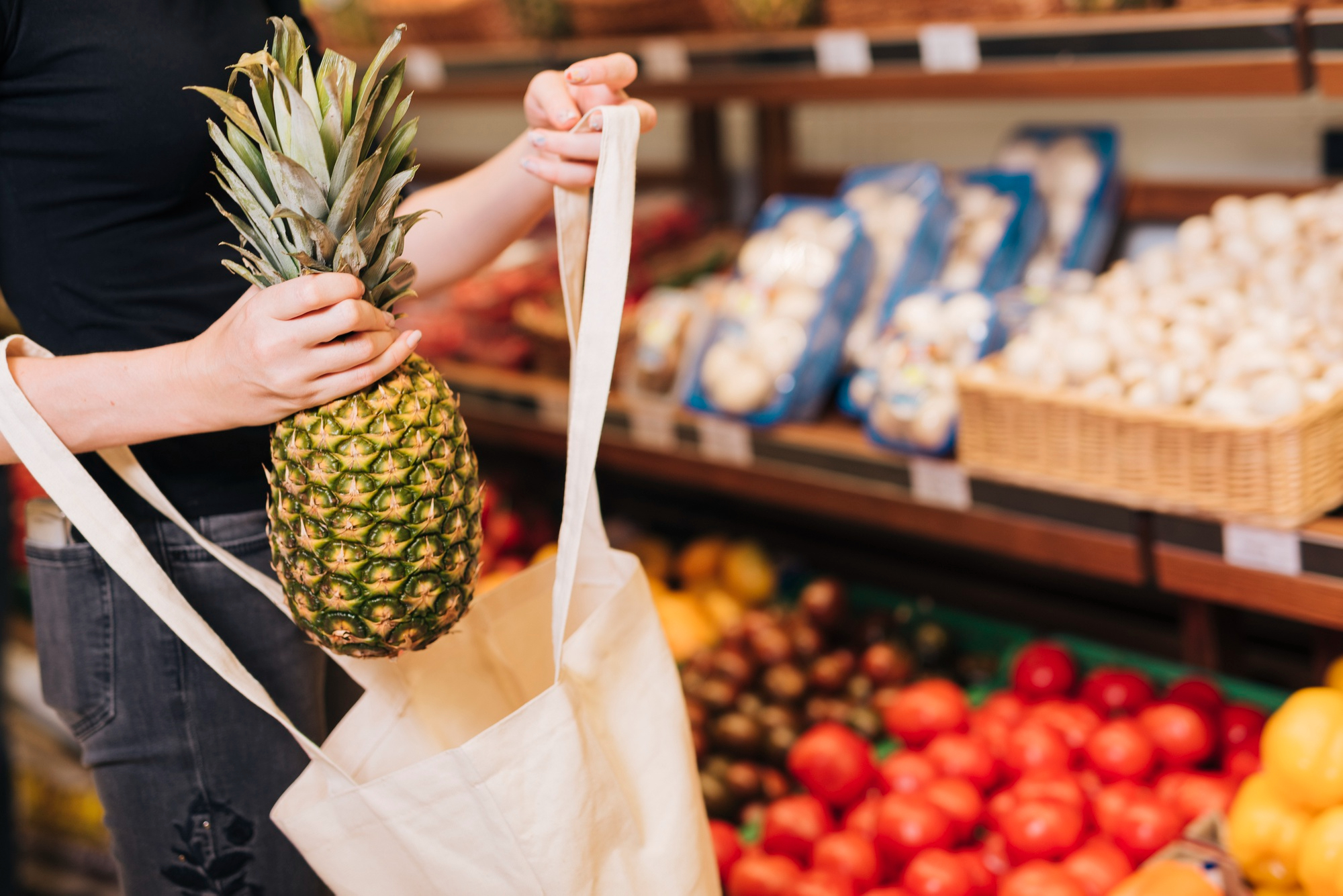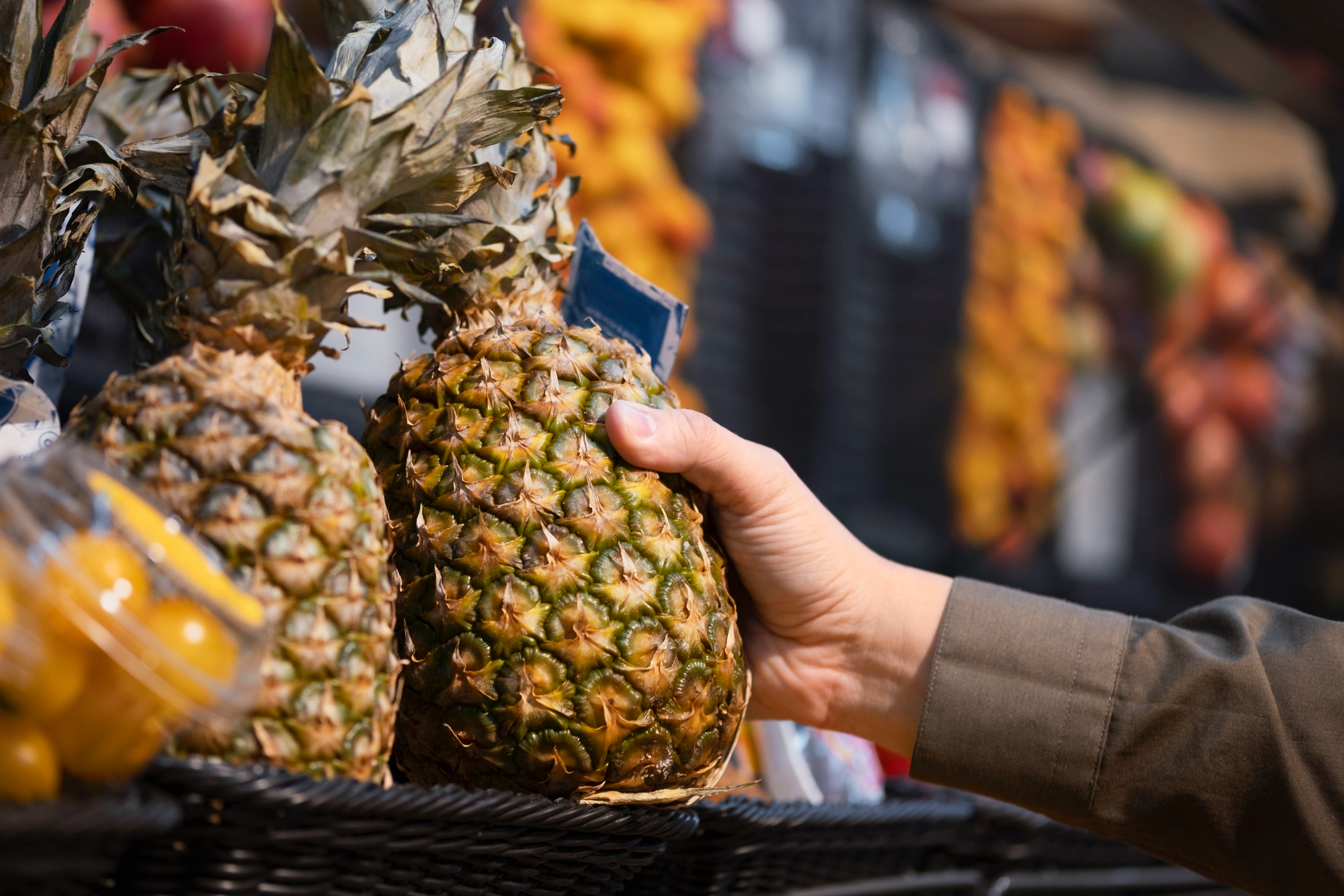Let yourself be tempted by the exotic taste of pineapple, this delicious fruit with a tropical touch. To fully enjoy its sweet and juicy flavor, it is essential to choose a ripe pineapple when purchasing.
The color of the bark: a criterion not to be neglected
Contrary to popular belief, the color of a pineapple’s peel is not always a good indicator of its ripeness. There are several varieties of pineapple, some of which remain green even when ripe. However, particular attention should be paid to the evolution of bark color, which should change from green to orange-yellow.
A ripe pineapple generally has a peel with well-defined scales, smooth and slightly flexible under the pressure of the fingers. Fruits with brown or very dark rind are often on the verge of rotting and should be avoided.
The different varieties of pineapple
- Victoria pineapple: originally from Reunion Island, this variety is appreciated for its fragrant flesh and low acidity. Its bark is rather green.
- Cayenne pineapple: grown mainly in South America and Ivory Coast, it is characterized by its large size and juicy flesh. Its bark is a mixture of green and orange-yellow when ripe.
- The Queen pineapple: originally from South Africa, this fruit is smaller in size but very fragrant and sweet. Its color varies between green and orange as it matures.
The scent of pineapple: an essential criterion
The smell is undoubtedly one of the most reliable criteria for choosing a ripe and tasty pineapple. A ripe fruit generally gives off a mild and sweet smell, reminiscent of the exotic taste of its flesh. To test this aspect, move closer to the base of the fruit, where the scent is generally more concentrated, and smell carefully.
If the smell is non-existent or even smells like “cardboard”, this means that the pineapple is still not ripe. Conversely, if the smell is too pronounced or fermented, the fruit is probably too ripe or overripe.
Other clues to spot a ripe pineapple

Storage time after harvest
Most of the pineapples sold in the market come from distant countries and have therefore been transported over long distances. It is therefore important to take into account the time since harvest.
Typically, pineapples are harvested when they are almost ripe and continue to ripen during transportation. Therefore, the longer the time that elapses after picking, the more likely the pineapple will be to reach full maturity.
The leaves: an additional clue
Although less reliable than the peel or the smell, the leaves of the pineapple can also give some indication of the ripeness of the fruit. The leaves of a ripe pineapple are generally bright green, with a slightly yellowish tint at the base. If they come off easily when pulled, it usually means the fruit is ready to eat.
The weight of the fruit in hands
Another tip for choosing a ripe pineapple is to check its weight by holding it in your hands. A ripe fruit will be relatively heavy in relation to its size, due to its succulent flesh full of juice. If, on the other hand, the pineapple seems light, it may still be too green and not juicy enough.
By applying these valuable tips during your next shopping trip, you will now be sure to find the ripe and tasty pineapple that will delight your taste buds and those of your loved ones. So don’t hesitate any longer, succumb to this exotic fruit with multiple taste and nutritional virtues!

How to prepare and store your pineapple after purchase
Ah, pineapple! This tropical fruit instantly transports us to sunny latitudes. But once you have chosen it carefully, how can you best prepare and store it to enjoy each piece? I’m going to explain all this to you, as if we were in the kitchen together, ready to tackle this culinary challenge.
Preparing the pineapple
Peeling and cutting:
- First, the equipment : Arm yourself with a good, sharp knife and a cutting board. Pineapple can be a slippery adversary!
- We cut the ends : Place the pineapple vertically and slice the top and bottom so that it sits straight on the board.
- Peeling : Stand the pineapple upright and cut the skin from top to bottom, following the shape of the fruit. Don’t worry if you leave “eyes”; we’ll take care of it right after.
- Remove the eyes : With the tip of the knife, make diagonal incisions around these small brown dots to remove them, creating a sort of spiral. It’s a bit artistic, don’t you think?
- Slice the pineapple : Cut it into quarters lengthwise, then remove the tough core from the center of each quarter. This heart is a little too robust to be pleasant to eat.
- Latest cuts : Then, depending on your preference, slice the quarters into smaller pieces or rounds, depending on how you want to use them.
Use of waste:
- For tea : Don’t throw away the skin and the heart! Boil them in a large pot of water to create a delicious pineapple tea. You can add a little cinnamon or honey for even more flavor.
- As compost : If you have a composter, the skin and core of the pineapple will be welcome. They will decompose and enrich your compost with valuable nutrients.
Storage of pineapple
Storage tips:
- In the refrigerator : Once cut, place the pineapple in an airtight container or wrap it carefully in plastic wrap. It will keep in the fridge for 3 to 5 days.
- In the freezer : For longer storage, place the pineapple pieces on a baking sheet covered with parchment paper. Freeze them separately first, then transfer them to a freezer bag. They will be perfect for smoothies or sorbets!
Signs of deterioration:
- The smell : If your pineapple starts to smell a little too fermented, or even alcoholic, that’s a sign that it’s past its prime.
- The texture : Soft or slimy parts indicate that the pineapple is going bad. Better to avoid them.
- The colour : A change to darker shades or mold spots are clear indicators that it’s time to say goodbye to your fruit.
So, with these little tips, I hope you will feel like a pineapple pro, ready to juggle this exotic fruit in your kitchen!
Nutritional Benefits of Pineapple
Nutritional intake:
Pineapple isn’t just tasty, it’s packed with benefits. Rich in vitamins C and B, minerals such as manganese and fiber, it is a great ally for our immune system and our nutritional balance. Vitamin C, for example, helps us fight infections, while manganese plays a key role in bone health and the metabolism of carbohydrates and proteins.
Pineapple and digestion:
Do you have trouble digesting? Think pineapple! Thanks to bromelain, an enzyme found primarily in its core, pineapple can help break down proteins, making digestion easier. This enzyme would also have anti-inflammatory properties and could even reduce post-exercise muscle pain. A real Swiss army knife!
Pineapple recipes
Varied recipes:
Pineapple has no equal when it comes to sprucing up your dishes and your taste buds. Here are some ideas:
- Chicken with pineapple : A sweet and sour classic where pineapple brings a touch of freshness.
- Tropical salad : Mix fresh pineapple with other fruits, a zest of lime, and a dash of honey for an explosion of flavors.
- Pineapple tarte : For those with a sweet tooth, a tart where pineapple rhymes with deliciousness.
Cocktails and drinks:
Nothing beats a cocktail or a cold pineapple-based drink to brighten up your summer evenings:
- Pineapple mojito : An exotic variation of the classic mojito, more tropical you die!
- Pineapple and mango smoothie : A nutritious and refreshing boost.
The environmental and ethical impact of pineapple cultivation
Sustainable culture:
Pineapple cultivation is not without impact on our planet. Between the intensive use of pesticides and land clearing, it is crucial to turn to more sustainable practices. Some producers adopt environmentally friendly methods, such as crop rotation or the use of organic compost.
Responsible choices:
As consumers, we have the power to support these practices. How ? By favoring the purchase of certified organic or fair trade pineapples, which guarantee not only respect for the environment but also fair working conditions for producers. Labels are often a good indicator, so let’s keep an eye out!
Pineapple is therefore a bit like nature’s Pandora’s box: open it, and you will discover a world of flavors, benefits, but also responsibilities. It’s up to us to choose how to make the most of it, while respecting our health and our planet.











